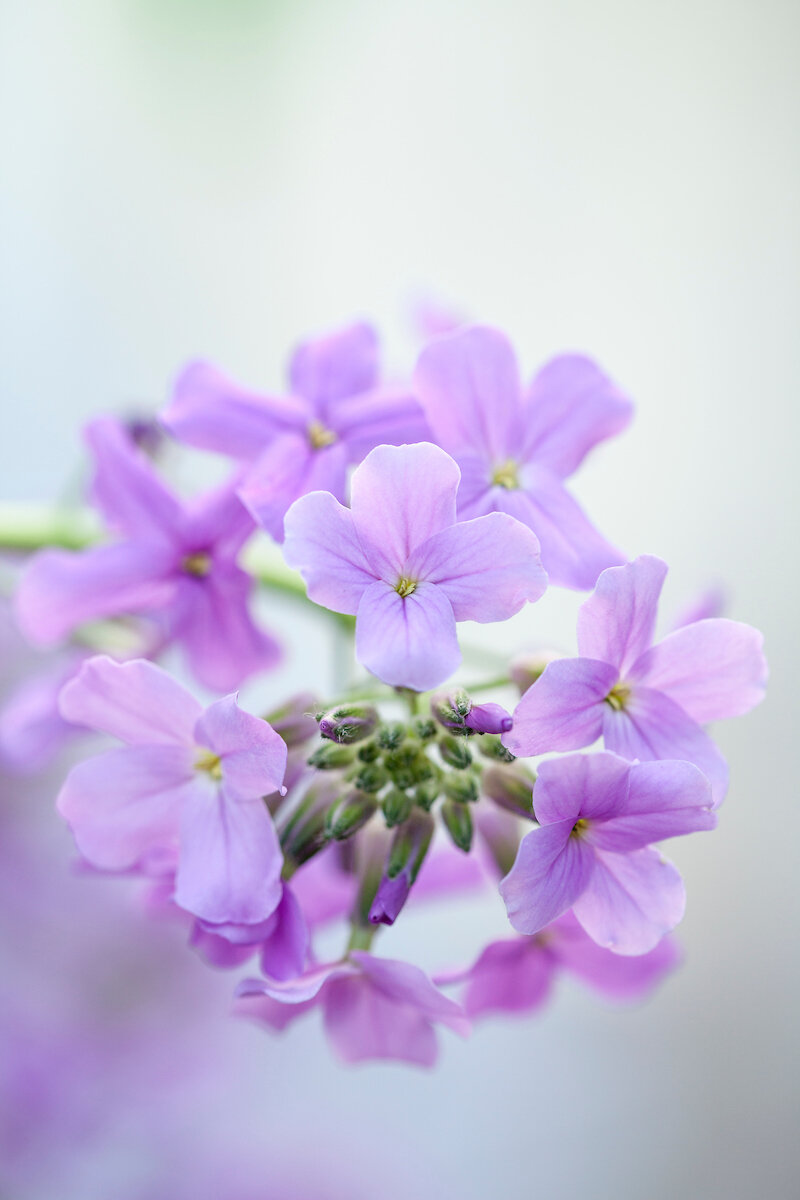Sweet Rocket
Photographs by Sabina Rüber
Sweetly-scented and loved by bees and butterflies, sweet rocket (Hesperis matronalis) is a welcome addition to a cottage garden or meadow border, and will seed around to produce more plants year after year if it’s in the right spot. Like the wallflower, it is a member of the brassica family, and although originally from central Europe, it has a long history of cultivation in Britain and America. It was mentioned in John Gerard’s Herbal of 1597, known then as Dame’s violet and Queen’s Gillyfloure, and in Philip Miller’s Gardener’s Dictionary of 1768 several varieties were mentioned, including double-flowered varieties. The biennial plants are a bit like honesty, but taller and more willowy, with loose clusters of simple, sweet-smelling flowers in mauve or white, each flower with four rounded petals. As biennials, they produce rosettes of leaves in their first season, and flower the following year. Today just the single-flowered varieties are grown, favoured for wild gardens, or as a filler in naturalistic borders, where the plants can be left to seed around to form fragrant drifts. There are only two forms: Hesperis matronalis itself, which is pale mauve, and a white form, ‘Alba’.
Sow hesperis seed in modules or outside in seedbeds in late spring and plant out in early autumn. Relaxed and easy-going, the plants will do well in either sun or dappled shade, and don’t need a rich soil. Their only foible is that they don’t like to be waterlogged, so plant them in an area where the soil is well-drained. If they are happy in their home they will let you know by seeding generously around, meaning that after that initial sowing, the only attention you’ll have to give them is to weed out unwanted seedlings.
Back to The Flower Garden main page. To buy a copy of The Flower Garden book click here.

